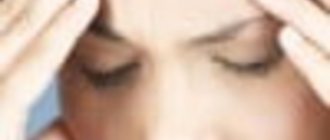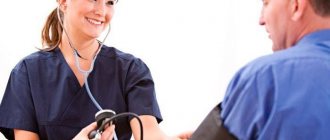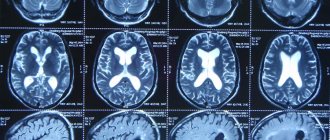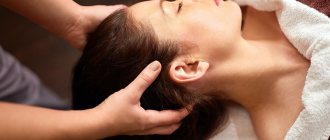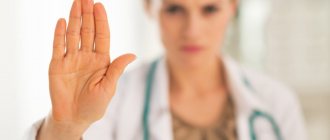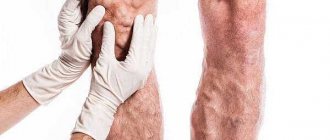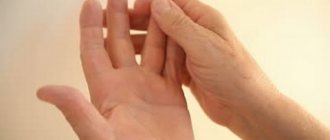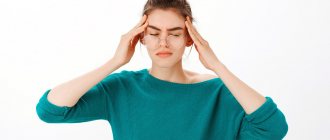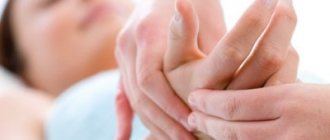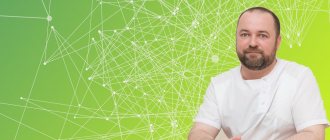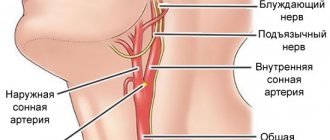In the hustle and bustle of everyday life, we often do not pay attention to constant tension and fatigue. But the most basic massage of the fingers can return us not only vigor, but also lift our spirits! Try taking a few minutes for yourself right now.
It is recommended to massage your fingers, like your hands, at any free moment, and especially if your hands are cold or sweaty. The fact is that according to Tibetan medicine, the areas of the fingers and the points of the palms are unique windows of health. Each finger is responsible for its own organ, and thanks to this massage the entire body is healed.
- The thumb reflects the condition of the lungs, bronchi (it has direct energetic connections with the bronchopulmonary system, and therefore massage of this finger is useful for inflammatory and allergic diseases of this system, such as tonsillitis, vasomotor rhinitis, bronchial asthma) and the liver. By massaging it, you can soften and even relieve any coughing attacks.
- The index finger directly sends signals to the entire digestive tract. Massage of the index finger allows you to relieve functional disorders of the gastrointestinal tract, for example, constipation, improves the emotional state, softens stress reactions, has an analgesic effect for pain in the fingers and hand, and even for toothache.
- The middle finger conducts a dialogue with the entire circulatory system. Massage of the middle finger improves the condition of neurocirculatory dystonia of the hypotonic type, alleviates and sometimes prevents the occurrence of hyperadrenal paroxysms characteristic of this disease.
- Massaging the ring finger helps overcome nervous disorders, stress and bad mood. It is good to use it for vascular spasms, high blood pressure, loss of strength, visual fatigue, and joint pain.
- The little finger is connected to the small intestine. By rubbing it, you can get rid of chronic constipation. Little finger massage is used for manifestations of functional disorders of the heart - cardialgia, palpitations of neurotic origin, neuralgia, hearing impairment, dysfunction of the small intestine.
- In the very center of the palm there is an activity point. By pressing on it, you can relieve palpitations and fatigue, restore vigor and a cheerful mood.
The good thing about hand massage is that it can be performed anywhere and anytime. Sitting at the computer or lying on the couch. Taking a bath or reading the newspaper.
First, you just need to rub your brushes in a circular motion for a minute, as if soaping them. The skin temperature will rise and your hands will warm up. Then you should vigorously stretch your joints.
- Sharply and quickly clench your fingers into a fist and slowly unclench them 10 times.
- Slowly clench your tense fingers into a fist and quickly fan them out 10 times.
Then each finger is massaged from tip to base on all sides. Particular attention should be paid to areas of organs that cause concern.
Massage of the fingers should be carried out with the thumb, index and middle fingers of the other hand in the direction from the nail to the hand, using stroking, and then rubbing and kneading until the massaged finger is well warmed up and the effect intended for this procedure is achieved.
To increase mental performance and strengthen memory, it is recommended to carry out the following set of exercises: place the tips of the thumb of one hand and the index finger of the other hand together and forcefully press them together, bending them outward. The same is done sequentially for the remaining fingers of each hand. Then, with the tip of the thumb, press firmly on the base of all the others in turn. This complex is repeated 20 times.
The palm is kneaded and massaged along three massage lines: from the inner edge to the base, from the outer edge to the midpoint of the palm and along the midline from the fingers to the wrist.
Then use your fingers and circular movements to warm up your wrists. The massage ends with rubbing the hands, which can be rubbed with a nourishing cream. It will be perfectly absorbed into the skin heated by massage.
The total massage time does not exceed 7-10 minutes. You can repeat it up to 5 times a day. But the most effective massage is in the morning, before breakfast.
Video
And finally, try another method of dealing with a depressed state - massaging points in the popliteal fossa. It is carried out in a sitting position, simultaneously massaging points on both legs. The massage is done with light circular movements of the index finger. The duration of the procedure is up to 5 minutes.
For immediate relief from some types of pain, you can try simple self-help techniques:
Cold
To relieve the symptoms of a cold or hay fever, find the “sore spot” located on the palm of your hand between the base of your middle and ring fingers. Using the thumb of your other hand, massage this point well in circular motions clockwise and counterclockwise for two minutes. This massage works especially well if you have headaches in the eye and nose area due to sinusitis. To clear a stuffy nose, press the tips of all your fingers together tightly for a few seconds and then release. Repeat the movement 5-6 times.
Warning: there are contraindications to massage of the cervical spine. Before following the recommendations, consult your doctor. In most cases, muscle pain in the cervical spine and associated headaches can be relieved or significantly reduced with a massage of the head, neck and cervical-collar area.
If desired, massage can be performed independently, without the help of a specialist. Self-massage uses only the strength of the arms (without the legs and body), which makes the effects less strong and sharply reduces the risk of injury. Massage movements should relax the muscles, so they are carried out smoothly and slowly. Provide a comfortable position for your head and neck. It is most convenient to carry out a massage when the head lies with the back of the head on a pillow or leans against the wall along with the back. At the same time, the muscles relax, which allows you to work with deeper layers of tissue. The sequence of massage movements is not a dogma. The author is guided by the great convenience of increasing strength and range of motion during a massage session. Therefore, you need to start with weaker and thinner muscles.
Introductory part of the massage: facial and masticatory muscles
Classic techniques: stroking and rubbing, can be omitted. Start with light kneading movements of the frontal area. The palmar surface of the terminal phalanges of the fingers, usually the index, middle and ring fingers, should fit tightly to the head. The thumbs are used for support - they form an axis around which rotation occurs. To imagine the tempo and amplitude, I recommend imitating the movements of your hand when brushing your teeth, but doing them twice as slow.
So you need to work the frontal areas from the inside out. Passes (3-7 in number) are performed lower and lower, slightly overlapping the previous one. Shifting the fingers in small “steps”: “step”-shift-“step”-shift...
Then, massage movements are performed on the temporal muscles - painful points are often found at the place of their attachment to the bones of the skull at the top. To get an idea of their size, place your hands on your temples and make chewing movements. The temporal masseter muscles are much larger than they appear. If there is a painful area at hand, you need to slow down and massage it for a longer time. Massage passages from front to back, top to bottom. When massaging the skin of the forehead and temple areas, try not to stretch it - this may provoke the appearance of wrinkles in the future.
Let's take our minds off the pain. Scalp massage
Next, you can pay a little attention to the scalp. There is no muscle underneath most of this area. In the middle, between the frontal and occipital belly of the supracranial muscle, there is a plate of fibrous tissue - the tendon helmet. However, the scalp is rich in nerve endings, and impacts on it have an impact on neighboring tissues. At the same time, the area of contact between the fingers and the skin should be minimal (fingers “between the hairs”), sliding is not allowed; to change the area being massaged, the fingers must be lifted and moved.
Kneading can be done intensively, simultaneously with all five fingers of each hand.
From head to neck. Massage the area where the neck muscles attach to the occipital region
The most critical area is the place of attachment of the muscles of the cervical spine and shoulder girdle to the occipital bone. This is where painful areas are most common.
Kneading of this zone is also carried out from the inside out, slowly and smoothly, searching for “problem” areas and influencing them. Despite the fact that near the border of the muscles there is a point of the vertebral artery, which bends and goes anteriorly into the cranial cavity through the foramen magnum, it is quite difficult to injure it during massage.
Slow stretching movements are very convenient, when the eminence of the thumb rests on the lateral surfaces of the neck and fingers II-V, connected together, move outward from the midline. The rate is about 1 cm/sec. If there is a painful compacted area under your fingers, pay attention to it - knead it slowly and persistently until it becomes indistinguishable from nearby tissues.
"Heavy artillery". Massage of the upper trapezius muscle
The same approach when massaging the neck muscles: - the upper portion of the trapezius muscle is the most superficial layer. The muscle itself is similar to a rhombus, the corners of which are located in the outer part of the scapula on both sides, at the top of the neck, along the nuchal line. The lower corner of the “diamond” is attached to the last thoracic vertebrae. The tendons of the muscle are connected to the spinous processes of the vertebrae throughout the cervical and thoracic regions. Tension of the upper trapezius muscle is often found in patients complaining of headaches, neck pain, as well as in people without complaints who remain in a static position for a long time (hairdressers, dentists, drivers, office workers).
For most people, it is possible to stretch the muscle separately along the entire length of the neck, as well as the shoulder girdle, by grasping it between the 1st and 2nd-4th fingers of the hand.
Slow deep movements of the II-IV fingers tightly pressed to the shoulder girdle from back to front are also effective. The range of movements may be minimal, even without displacement of the hands relative to the skin. Feel the massive trapezius muscle under your fingers and try to slowly stretch it. At the same time, you can slowly straighten your neck and throw your head back, spreading the lower corners of your shoulder blades and elbows to the sides.
The main source of troubles and its elimination. Massage of the splenius muscles and other long muscles of the neck
Typically, the main source of pain in the cervical spine is tension in the deep long muscles. First of all, the splenius capitis muscle. It starts from the spinous processes of the Th3-5 vertebrae and goes outward to the lateral part of the superior nuchal line and along the posterior edge of the mastoid process. Covered by the upper part of the trapezius muscle.
If the muscle is tense, it can be felt in the form of a cord running obliquely from bottom to top in the depths of the neck muscles.
You can more effectively stretch the muscle in a lying position, grasping it between fingers I and II on each side. In this case, the back of the head rests on the pillow, and the muscle, the main function of which is to hold the head straight, relaxes.
The muscle, due to compacted areas, may be heterogeneous to the touch. The movements should be slow, light and long to eliminate tension and pain.
The finishing touches. Massage of the short muscles of the neck.
After “dealing” with the splenius muscle, remain in a lying position and stretch the short muscles of the neck, which are located outside of the splenius muscle and under it. Even though they are located deep, be careful not to apply too much pressure. A massage technique is effective when smooth, rhythmic, amplitude movements of the elbow (“long lever arm”) are converted into short movements of the hand (“short lever arm”), and the area of the wrist joint acts as a fulcrum: gently press your fingers against the massaged area, and Move your elbow up and down like a dog scratching behind its ear, but unlike an animal, keep your fingers on your neck and move them slowly.
Backache
Using the thumb of your right hand, apply strong pressure along the entire thumb of your left hand, starting from the very base and ending with the tip of the nail. This part of the hand corresponds to the spine. By massaging it, you help relieve tension and relax the muscles that support the spine. Take turns on both hands, massage this section several times, find the solar plexus point (see general diagram) and gently massage it. This will help relieve tension from your back and whole body.
Indications for head massage
Head massage is indicated for people with neurological pathologies. First of all, these are neurosis, neuritis, asthenia, chronic stress and fatigue, lack of strength, drowsiness and fatigue, insomnia, headache, decreased concentration, memory loss, encephalopathy and a number of other conditions.
Head massage is a medical procedure that has contraindications. These include the following conditions: acute inflammatory processes, elevated body temperature, blood and skin coagulation disorders, cancer, infections and mental disorders.
Shoulder pain
Find the “shoulder point” on your palm at the base of your ring and little fingers. Using the tip of your thumb, massage the point for a minute on each hand. Shoulder pain is most often associated with poor posture, so first you need to find out what is causing your pain. If you suspect that the reason is an inconvenient workplace, try to sit firmly in a chair so that the backrest provides good support for your lower back. If, while sitting firmly in a chair, you still cannot reach the back, place a thick pillow under your back.
Stress
Often when we are nervous, we finger something with our hands - this is a natural reaction. To get rid of stress, under the influence of which we are in difficult times, massage your palms, as shown in the photo. Also massage the solar plexus point, located in the middle of the palm (see general diagram). Using the tip of your thumb, massage this point in a circular motion for two to three minutes.
How to do self-massage of hands
You can massage your hands with arbitrary movements, squeezing each finger, slightly twisting it, stretching it. This will improve blood circulation in your hands.
Hegu point on the hand
Also on the hands there is an important point at the place where the base of the thumb and index finger is located. In Japanese tradition it is called the “hegu point”. Press it firmly. You will immediately feel the effect. If you are tired, have not had enough sleep, or are experiencing a loss of strength, massage this point and you will feel significantly better.
listening to the pulse
Listening to the pulse
. This practice is popular in Ayurveda. The pulse can tell a lot about the state of the human body and make a diagnosis. However, this is a whole science. You and I will simply listen to our pulse, because, in addition to diagnosis, this process also has a meditative effect.
Place your fingers as in the photo and sit quietly. Listen to the pulse moving in waves through your fingers. This is your pulse. Stay in silence and harmony with yourself and your body.
longevity points knees
knee longevity points
Headache
To feel instant relief, do this simple massage - feel the tip of your thumb and determine its most sensitive point, then massage this place with a confident movement of the other thumb. Repeat the same with the other hand. If the headache does not go away, then its cause is probably due to back problems - poor posture, tension in the back. If you often suffer from headaches, it is better to consult a doctor to identify the true cause of the problem.
Massage-induced effects
Mechanical and physical effects on the tissues of the head, bioactive points, neck and collar area help reduce pain and in some cases completely get rid of them due to several massage effects:
- Blood flow in tissues is activated during massage. In turn, this helps get rid of accumulated toxins, improves the supply of oxygen molecules to the brain, and reduces blood pressure;
- The spasm is relieved from the vessels, they expand to a normal level;
- Massage has a relaxing and calming effect, which helps to cope with cephalalgia caused by stress, fatigue, and prolonged tension;
- The conduction of nerve impulses improves, which stabilizes the functioning of the NS organs.
With osteochondrosis of the neck, due to destructive-dystrophic changes in the vertebrae, the nerve bundle and blood vessels are clamped. As a result, the brain suffers from hypoxia, which is the main cause of cephalgia and dizziness. In order for your head to stop hurting, you need to remove this clamp and massage does the best job of doing this. It also helps with noise, decreased quality of sleep, and apathy.
A positive result of massage procedures can be considered an improvement in the condition of the scalp and hair. Patients who have completed a full course of massage from specialists note a decrease in the amount of dandruff, strengthening of hair, increased shine and growth.
Irritable bowel syndrome
Stimulate points that affect digestion by drawing a curved line along the contour of the palm from the base of the thumb to the little finger. Massage for 2 minutes, then repeat the same with the other hand. Another effective way to get rid of indigestion is to stimulate the corresponding points on the feet. To do this, place a tennis ball on the floor, step on it with the center of your foot and roll in circles for 3 minutes.
